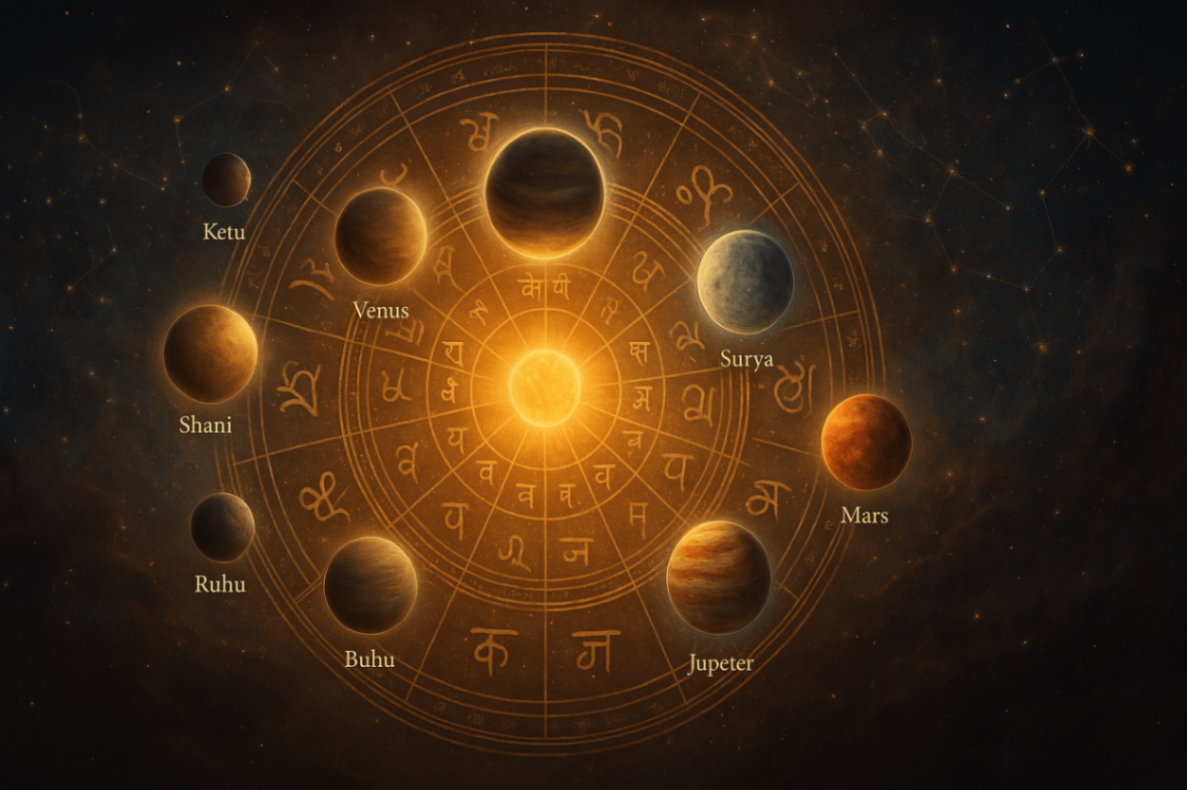Understanding Nakshatras in Vedic Astrology

Vedic astrology is a profound science that delves into the cosmic influences on human life. Among its many elements, nakshatras play a pivotal role in shaping predictions and understanding life events. Nakshatras, or lunar mansions, are crucial in the art of prediction, serving as the underlying force behind zodiac signs. This article explores the application of nakshatras in assessing life events during planetary periods, known as dashas.
The Role of Nakshatras in Vedic Astrology
Nakshatras are the twenty-seven divisions of the zodiac, each governed by a specific planetary ruler. These divisions are further categorized into groups ruled by major planets like Rahu, Ketu, Sun, Jupiter, Mars, and others. The nakshatras are essential because they determine how planets express their energies and influence life events. Understanding nakshatras is crucial for accurate predictions, as they act as game changers in astrology.
Myth-Busting: Planets and Their Nakshatras
A common myth in Vedic astrology is that planets are solely influenced by their zodiac signs. However, the nakshatras they occupy can significantly alter their effects. For instance, Saturn, which rules Pusha, Anuradha, and Uttara Bhadrapada nakshatras, can have diverse effects depending on the nakshatra it resides in, even if placed in signs traditionally considered inimical. Anuradha, for example, despite being in Scorpio, can bring success when Saturn resides there.
Practical Application: Assessing Dashas Nakshatras
When analyzing a persons dasha or planetary period, it is crucial to consider the nakshatra of the activated planet. This provides deeper insights beyond the planetary sign placement. Ignoring nakshatras can lead to superficial interpretations. Here are some practical examples:
Saturn in Anuradha Nakshatra: For an Aries ascendant, if Saturn is in the eighth house in Anuradha, it can bring hidden strengths to the surface, despite Saturns challenging nature.
Jupiter in Ashlesha Nakshatra: If Jupiter is in the fourth house in Ashlesha for an Aries ascendant, its influence can be moderated by the ruling planet of Ashlesha, Mercury. If Mercury is poorly placed, the results may not be as favorable.
Case Study: Gemini Ascendant and Nakshatra Analysis
Consider a Gemini ascendant undergoing Jupiters mahadasha, with Jupiter in the tenth house in Pisces. If Venus enters its sub-period (antar dasha) and is placed in the twelfth house in Taurus, the nakshatra placement is critical. If Venus is in Rohini, ruled by the Moon, and the Moon is debilitated in the sixth house, this can lead to increased expenses and potential debt, despite Venuss favorable position.
Conclusion: The Ultimate Significance of Nakshatras
Nakshatras are invaluable in Vedic astrology, providing a nuanced layer to planetary analysis. While planets and zodiac signs offer a broad overview, nakshatras add depth and precision to predictions. By understanding nakshatras, astrologers can offer more accurate insights into life events and help individuals navigate their paths more effectively.
For more information on the divine science of Vedic astrology and to keep updated, subscribe to our channel and follow us on social media.
























